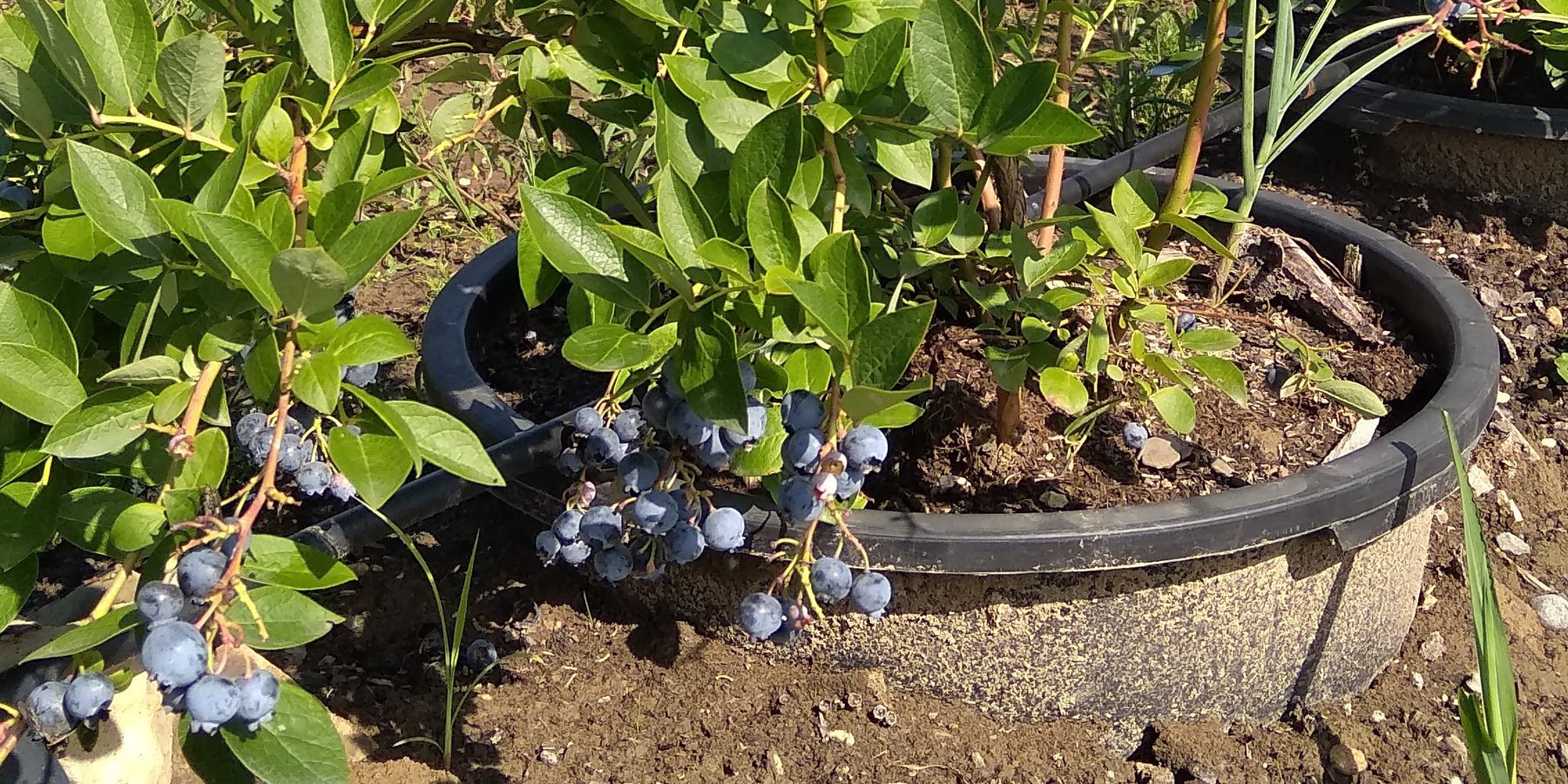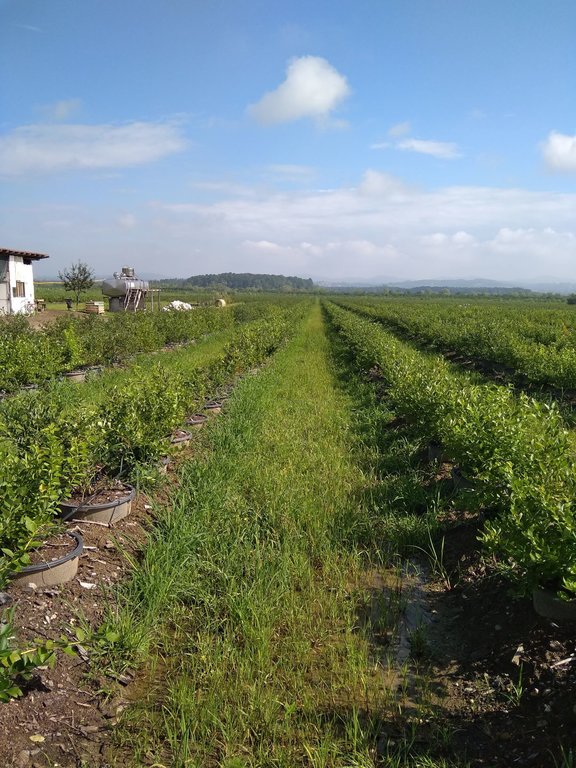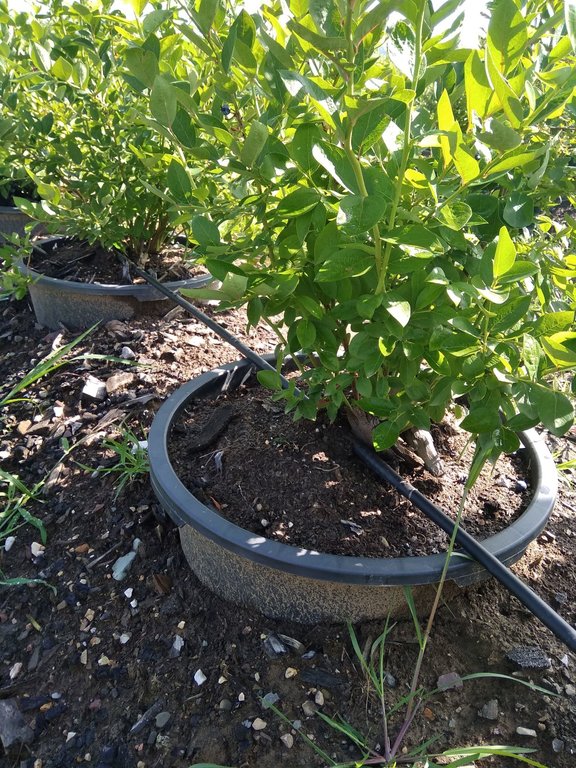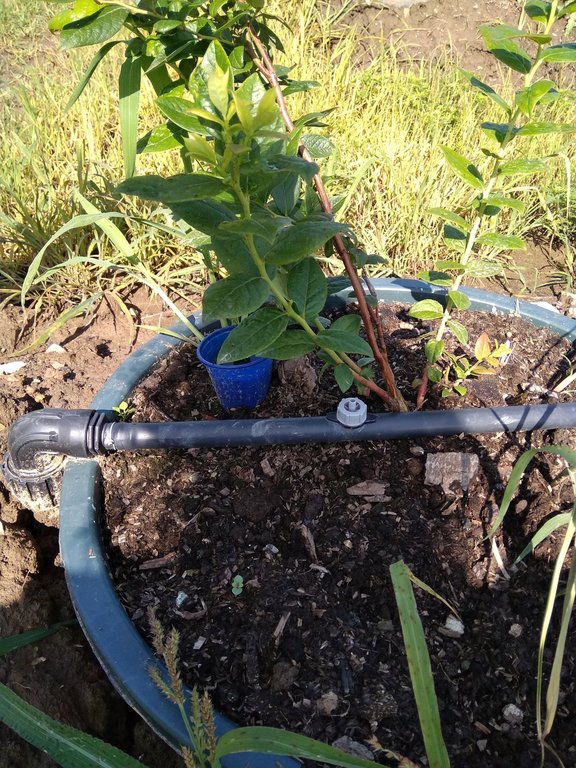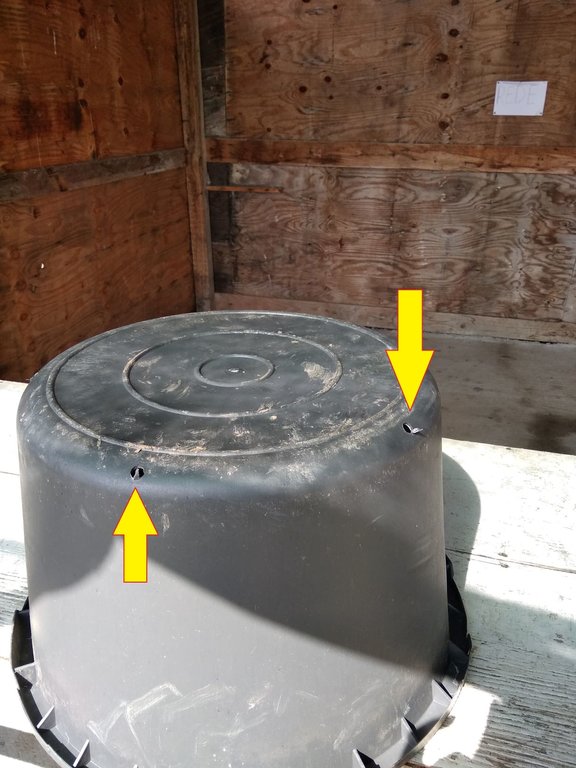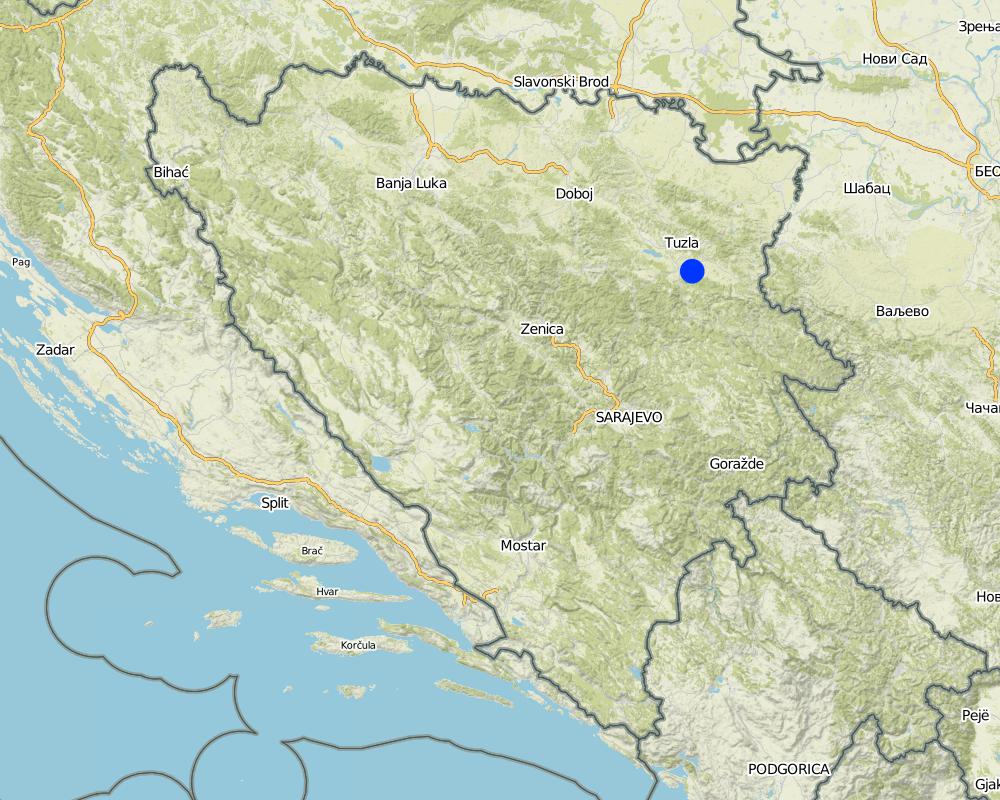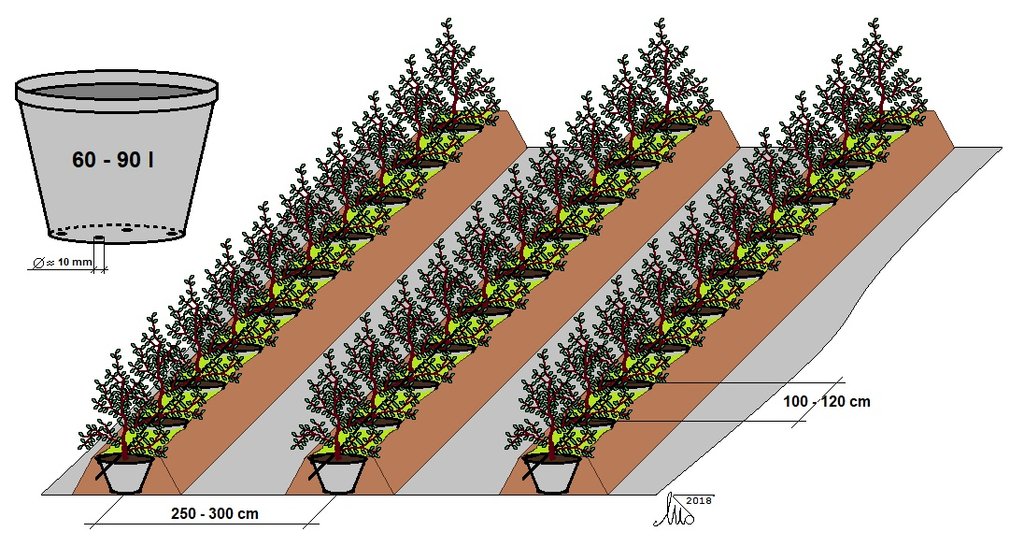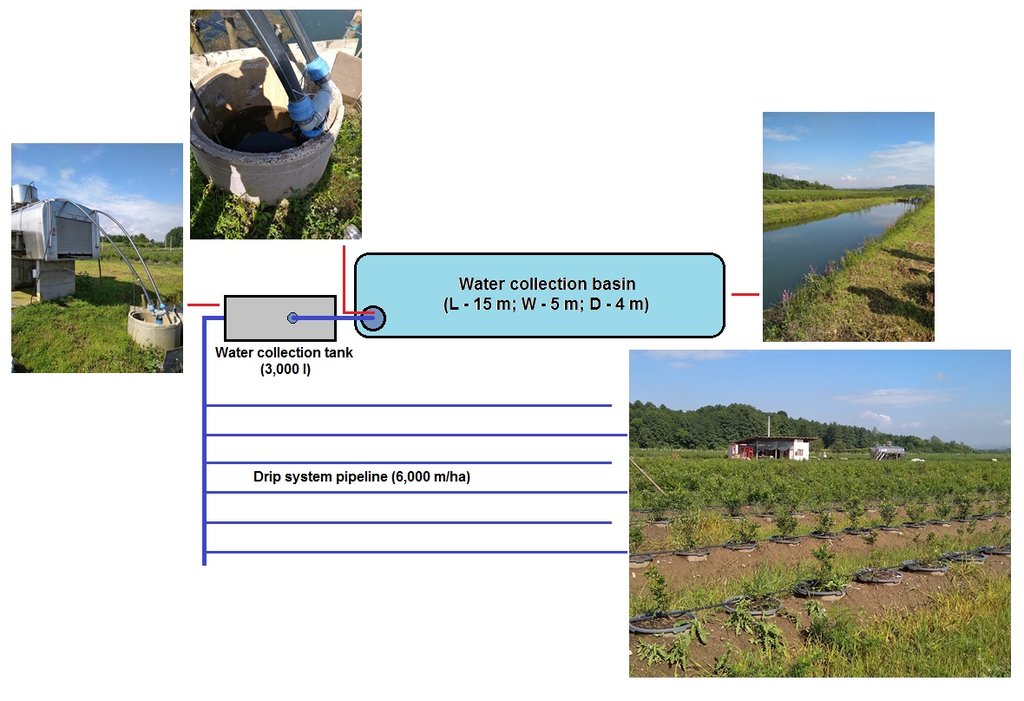Cultivation of blueberries on infertile/degraded soils using plant pots [Bosnie-Herzégovine]
- Création :
- Mise à jour :
- Compilateur : Melisa Ljusa
- Rédacteur : –
- Examinateurs : Rima Mekdaschi Studer, THEODORA FETSI, Donia Mühlematter
Kontejnerski uzgoj borovnice na neplodnim ili degradiranim tlima
technologies_4126 - Bosnie-Herzégovine
Voir les sections
Développer tout Réduire tout1. Informations générales
1.2 Coordonnées des personnes-ressources et des institutions impliquées dans l'évaluation et la documentation de la Technologie
Spécialiste GDT:
Čustović Hamid
++387 33 22 57 27 / ++387 61 77 52 11
custovic.hamid@gmail.com / h.custovic@ppf.unsa.ba
Universiyt of Sarajevo, Faculty of Agriculture and Food Sciences
Zmaja od Bosne 8, Kampus UNSA, 71000 Sarajevo
Bosnie-Herzégovine
co-compiler:
Agronomist of the Živinice Municipality:
Butković Mirsad
++387 35 74 33 01
mirsad@opcinazivinice.ba
Municipality of Živinice - Department of Local Economic Development, Finance and Treasury
Alije Izetbegovića 28, 75270 Živinice
Bosnie-Herzégovine
exploitant des terres:
Đogić Alija
1.3 Conditions relatives à l'utilisation par WOCAT des données documentées
Quand les données ont-elles été compilées (sur le terrain)?
10/07/2018
Le compilateur et la(les) personne(s) ressource(s) acceptent les conditions relatives à l'utilisation par WOCAT des données documentées:
Oui
1.4 Déclaration sur la durabilité de la Technologie décrite
Est-ce que la Technologie décrite ici pose problème par rapport à la dégradation des terres, de telle sorte qu'elle ne peut pas être déclarée comme étant une technologie de gestion durable des terres?
Non
2. Description de la Technologie de GDT
2.1 Courte description de la Technologie
Définition de la Technologie:
Establishment of blueberries cultivation in plant pots on soils with bad physical or chemical properties. The technology improves productivity and generates income for the farmers. The implementation requires drip irrigation system.
2.2 Description détaillée de la Technologie
Description:
The cultivation of blueberries in plant pots has been successfully implemented in the area of Živinice municipality - on soils of poor composition, physical properties and low fertility. Many efforts have been made to introduce a conventional production of blueberries but did not bring the expected results due to the bad soil quality.
The soil (Stagnogley) is poorly permeable to water, so even moderate rainfalls cause water remain on the surface, making it difficult or completely impossible to cultivate the land. In addition, soils of high acidity are required for the successful cultivation of blueberries. Planting blueberries in a conventional way is often carried out on soils where the acidity is increased by various additives (often with wood sawdust or similar wooden materials). Practical experience has showed that in the course of time the acidic properties of the soil in the zone of the development of the blueberry root change, i.e. soil/substrate acidity decreases due to resorption processes on the primary soil. Todays' market offers multi-component substrates for the cultivation of blueberries, which, in addition to their adequate acidity, have other properties necessary for a good development of the blueberry's root system. These substrates were also used in some localities of the municipality of Živinice in conventional or modified conventional planting of blueberries (on embankments using soil and commercial substrates). This technique did not yield satisfactory results, probably because of the loss of substrate properties (decrease of soil acidity) due to resorption to the nearby original soil. The substrate keeps its desirable properties much longer if it is put into the planting where blueberries are being planted.
The basic advantage of this technology is its ability to be applied on practically all soils of poor agricultural-productive properties, including heavily degraded and low water permeable soils. Even if the cost for introducing the technology is relatively high, its maintenance is reduced to standard agro-technology (fertigation, plant protection, weed control, harvesting, etc.) due to the type of crop. In the Živinica municipality, technology is currently being applied only in the cultivation of blueberries. The results have shown that the cultivation of blueberries in plant pots provides a yield of about 15 t/ha, which is about 5 t/ha (50%) higher than in the conventional cultivation of the blueberries. The farm on which the technology is described cultivated blueberries of the Duke variety on 8 ha whose fruits are sold at prices between 3.50 and 4.50 USD/kg. The estimated life span of the blueberries grown in plant pots under full yield is 15 years.
Regarding the technical characteristics of the SLM technology, the plant pots with blueberry plantings are placed in rows of low trenches with a distance of 100-120 cm between the plant pots (from center to center); and 250-300 cm between rows. The plant pots (60 to 90 liters) are placed in later formed embankments (trussing with the original soil), thus ensuring the stability of the plant pots (e.g. from wind) and more favorable temperature and humidity conditions of the substrate in the plant pots. The technology implies possession and use of the drip irrigation system, using the water collected in accumulations and distributed from tanks situated on the farm.
The technology offers relatively innovative use of infertile or degraded soils for the intensive and profitable production of blueberries or other crops, primarily berry fruits. Positive experiences from the implementation of the technology on about 8 ha, on the observed farm resulted in the replacement of the earlier conventionally planted and grown blueberries in the wider area of Živinice. By expanding blueberries cultivation in wider areas, the municipality is considered among the leading blueberry producers in the Balkans.
2.3 Photos de la Technologie
2.5 Pays/ région/ lieux où la Technologie a été appliquée et qui sont couverts par cette évaluation
Pays:
Bosnie-Herzégovine
Région/ Etat/ Province:
Federation of Bosnia and Herzegovina, Tuzla Canton
Autres spécifications du lieu:
Živinice municipality
Map
×2.6 Date de mise en œuvre de la Technologie
Indiquez l'année de mise en œuvre:
2014
2.7 Introduction de la Technologie
Spécifiez comment la Technologie a été introduite: :
- grâce à l'innovation d'exploitants des terres
Commentaires (type de projet, etc.) :
The technology was introduced by the endorsement of the Municipality.
3. Classification de la Technologie de GDT
3.1 Principal(aux) objectif(s) de la Technologie
- améliorer la production
- réduire, prévenir, restaurer les terres dégradées
- créer un impact économique positif
3.2 Type(s) actuel(s) d'utilisation des terres, là où la Technologie est appliquée

Terres cultivées
- Plantations d’arbres ou de buissons
Principales cultures (vivrières et commerciales):
Blueberry
Commentaires:
The land, where the described technology is applied, is characterized by bad soil physical properties (heavy soils, poorly permeable to water, even moderate rainfalls do not allow movement of workers and mechanization).
Si l'utilisation des terres a changé en raison de la mise en œuvre de la Technologie, indiquez l'utilisation des terres avant la mise en œuvre de la Technologie:
The land was previously used for the production of grass mixtures for cattle feeding.
3.3 Informations complémentaires sur l'utilisation des terres
Approvisionnement en eau des terres sur lesquelles est appliquée la Technologie:
- pleine irrigation
Nombre de période de croissance par an: :
- 1
3.4 Groupe de GDT auquel appartient la Technologie
- Crop management
3.5 Diffusion de la Technologie
Spécifiez la diffusion de la Technologie:
- répartie uniformément sur une zone
Si la Technologie est uniformément répartie sur une zone, indiquez la superficie couverte approximative:
- < 0,1 km2 (10 ha)
Commentaires:
In the Živinice municipality the technology of blueberry cultivation in plant pots is evenly spread on about 8 ha, with plans to replace most of the conventional blueberry plantations with this type of cultivation. There are also some plans to move blueberry production in plant pots to infertile lands formed on landfills of coal mining which are quite spread in the region.
3.6 Mesures de GDT constituant la Technologie

pratiques végétales
- V1: Couverture d’arbres et d’arbustes

modes de gestion
- M2: Changement du niveau de gestion / d'intensification
3.7 Principaux types de dégradation des terres traités par la Technologie

dégradation chimique des sols
- Cn: baisse de la fertilité des sols et réduction du niveau de matière organique (non causée par l’érosion)

dégradation physique des sols
- Pc: compaction
- Pk: scellage et encroûtement
- Pu: perte de la fonction de bio-production en raison d’autres activités

autre
Commentaires:
The technology could be applied on practically all kinds of degraded lands if there is a possibility to provide (preferably) drip irrigation.
3.8 Prévention, réduction de la dégradation ou réhabilitation des terres dégradées
Spécifiez l'objectif de la Technologie au regard de la dégradation des terres:
- s'adapter à la dégradation des terres
4. Spécifications techniques, activités, intrants et coûts de mise en œuvre
4.1 Dessin technique de la Technologie
4.2 Spécification/ explications techniques du dessin technique
The proposed distance between containers is 1,0 - 1,2 m and between rows 2,5 - 3,0 m. The containers should be covered with original soil to about 3/4 of their height (stability, better temperature and moisture conditions in the substrate).
Drip irrigation system is an integral part of the technology. On the spot where the technology was described, water for drip irrigation is provided from small artificial basin (around 300 cubic meters; see sketch and photos) connected by pump with tank (3,000 L) raised above ground level, everything constructed inside the farm. The rainfall water is collected and directed to the reservoir by a network of drainage channels constructed on the farm earlier.
4.3 Informations générales sur le calcul des intrants et des coûts
Spécifiez la manière dont les coûts et les intrants ont été calculés:
- par superficie de la Technologie
Indiquez la taille et l'unité de surface:
1 ha
Indiquez la monnaie utilisée pour le calcul des coûts:
- dollars US
Indiquez le coût salarial moyen de la main d'œuvre par jour:
29.25 USD
4.4 Activités de mise en place/ d'établissement
| Activité | Type de mesures | Calendrier | |
|---|---|---|---|
| 1. | Purchasing of plantings | Végétale | Any time |
| 2. | Purchase of substrate | Autres mesures | Any time |
| 3. | Ground leveling (if necessary) | Structurel | Any time |
| 4. | Filling the containers with substrate and planting blueberries in containers | Agronomique | Any time |
| 5. | Formation of rows of containers | Modes de gestion | Any time |
| 6. | Trussing of rows of containers by original soil | Modes de gestion | Any time |
| 7. | Installation of drip irrigation system | Modes de gestion | Any time |
Commentaires:
Preferably blueberry plantings are 3 or 2 years old, in plant pots (containers) not smaller than 2 liters.
4.5 Coûts et intrants nécessaires à la mise en place
| Spécifiez les intrants | Unité | Quantité | Coûts par unité | Coût total par intrant | % des coût supporté par les exploitants des terres | |
|---|---|---|---|---|---|---|
| Main d'œuvre | Filling the containers with substrate and planting of blueberries | Person day | 28,0 | 29,25 | 819,0 | 100,0 |
| Main d'œuvre | Forming and trussing the rows of containers (embankments) | Person day | 30,0 | 29,25 | 877,5 | 100,0 |
| Equipements | (Mecahnization for ground leveling - optional) | Hour | 4,0 | 70,2 | 280,8 | 100,0 |
| Matériel végétal | Blueberry plantings in containers (2 or 3 L plant pots) | Piece | 2800,0 | 5,26 | 14728,0 | 100,0 |
| Autre | Plastic containers (65 l) | Piece | 2800,0 | 5,47 | 15316,0 | 100,0 |
| Autre | Drip irrigation system (including water tank and pump) | ha | 1,0 | 13460,0 | 13460,0 | 100,0 |
| Autre | Multi-functional substrate for blueberries | L | 182000,0 | 0,07 | 12740,0 | 100,0 |
| Coût total de mise en place de la Technologie | 58221,3 | |||||
Commentaires:
Ground leveling with use of mechanization is not necessary on plain or relatively plain terrains.
The cost of 2 or 3 years old blueberry planting in small (2 l) container include delivery (on farm) costs.
The costs of plastic plant pots (65 l) and substrate for blueberries include delivery (on farm) costs.
The price of drip irrigation system include delivery (on farm) and installation costs. It includes water reservoir (3,000 l), pump for water transfer from the basin to the reservoir and construction of well for pump in the basin. The costs of the irrigation system does not include construction of the basin for collection of water (it was constructed earlier, by previous land user), but one can calculate the costs of such structure (basin: L - 15 m, W - 5 m, D - 4 m) under local conditions. Current estimate of costs for such construction in Živinice municipality is around 4,000 USD. The total length of drip system pipeline per ha for the presented technology is 6,000 m.
Under the concrete conditions, the land user handles land leased from the municipality. The land rental charges are not included in the costs of establishing or maintaining the technology since they are, in this case, favorable (103 USD/ha/year) and can vary considerably under other conditions.
4.6 Activités d'entretien/ récurrentes
| Activité | Type de mesures | Calendrier/ fréquence | |
|---|---|---|---|
| 1. | Checking and maintenance of embankments (rows of containers) | Modes de gestion | Once a year |
| 2. | Maintenance of drip irrigation system | Modes de gestion | During the growing season |
| 3. | Maintenance of blueberry orchard | Agronomique | During the growing season |
Commentaires:
During the exploitation of the technology ordinary agro-technical measures (plant protection, applied in growing of blueberries) are applied and they are not listed here as the technology maintenance activities.
4.7 Coûts et intrants nécessaires aux activités d'entretien/ récurrentes (par an)
| Spécifiez les intrants | Unité | Quantité | Coûts par unité | Coût total par intrant | % des coût supporté par les exploitants des terres | |
|---|---|---|---|---|---|---|
| Main d'œuvre | Checking and maintenance of embankments (rows of containers) | Person day | 10,0 | 29,25 | 292,5 | 100,0 |
| Equipements | Maintenance of drip irrigation system | ha | 1,0 | 344,08 | 344,08 | |
| Autre | Maintenance of blueberry orchard (lump sum) | ha | 1,0 | 20644,57 | 20644,57 | |
| Coût total d'entretien de la Technologie | 21281,15 | |||||
Commentaires:
The costs of maintenance of the blueberry orchard include all agro-technical measures and works (fertigation, plant protection, weed control, harvest) applied in growing of blueberry (Duke variety) in plant pots. The farm provide water free of charge, from its own drip irrigation system.
4.8 Facteurs les plus importants affectant les coûts
Décrivez les facteurs les plus importants affectant les coûts :
The prices of blueberry plantings, containers, and multi functional substrate for blueberries on the market.
5. Environnement naturel et humain
5.1 Climat
Précipitations annuelles
- < 250 mm
- 251-500 mm
- 501-750 mm
- 751-1000 mm
- 1001-1500 mm
- 1501-2000 mm
- 2001-3000 mm
- 3001-4000 mm
- > 4000 mm
Spécifiez la pluviométrie moyenne annuelle (si connue), en mm:
894,00
Spécifications/ commentaires sur les précipitations:
The highest precipitations appear during spring and early summer, (June 111 L/m2; February 55 L/m2). Heavy downpours during the summer are one of the climatic features of this area.
Indiquez le nom de la station météorologique de référence considérée:
Tuzla
Zone agro-climatique
- subhumide
5.2 Topographie
Pentes moyennes:
- plat (0-2 %)
- faible (3-5%)
- modéré (6-10%)
- onduleux (11-15%)
- vallonné (16-30%)
- raide (31-60%)
- très raide (>60%)
Reliefs:
- plateaux/ plaines
- crêtes
- flancs/ pentes de montagne
- flancs/ pentes de colline
- piémonts/ glacis (bas de pente)
- fonds de vallée/bas-fonds
Zones altitudinales:
- 0-100 m
- 101-500 m
- 501-1000 m
- 1001-1500 m
- 1501-2000 m
- 2001-2500 m
- 2501-3000 m
- 3001-4000 m
- > 4000 m
Indiquez si la Technologie est spécifiquement appliquée dans des:
- non pertinent
5.3 Sols
Profondeur moyenne du sol:
- très superficiel (0-20 cm)
- superficiel (21-50 cm)
- modérément profond (51-80 cm)
- profond (81-120 cm)
- très profond (>120 cm)
Texture du sol (de la couche arable):
- moyen (limoneux)
Texture du sol (> 20 cm sous la surface):
- fin/ lourd (argile)
Matière organique de la couche arable:
- moyen (1-3%)
5.4 Disponibilité et qualité de l'eau
Profondeur estimée de l’eau dans le sol:
en surface
Disponibilité de l’eau de surface:
moyenne
Qualité de l’eau (non traitée):
uniquement pour usage agricole (irrigation)
La salinité de l'eau est-elle un problème? :
Non
La zone est-elle inondée?
Oui
Régularité:
épisodiquement
5.5 Biodiversité
Diversité des espèces:
- moyenne
Diversité des habitats:
- moyenne
5.6 Caractéristiques des exploitants des terres appliquant la Technologie
Sédentaire ou nomade:
- Sédentaire
Orientation du système de production:
- commercial/ de marché
Revenus hors exploitation:
- moins de 10% de tous les revenus
Niveau relatif de richesse:
- riche
Individus ou groupes:
- employé (entreprise, gouvernement)
Niveau de mécanisation:
- mécanisé/ motorisé
Genre:
- hommes
Age des exploitants des terres:
- personnes d'âge moyen
5.7 Superficie moyenne des terres détenues ou louées par les exploitants appliquant la Technologie
- < 0,5 ha
- 0,5-1 ha
- 1-2 ha
- 2-5 ha
- 5-15 ha
- 15-50 ha
- 50-100 ha
- 100-500 ha
- 500-1 000 ha
- 1 000-10 000 ha
- > 10 000 ha
Cette superficie est-elle considérée comme de petite, moyenne ou grande dimension (en se référant au contexte local)?
- grande dimension
5.8 Propriété foncière, droits d’utilisation des terres et de l'eau
Propriété foncière:
- communauté/ village
Droits d’utilisation des terres:
- loué
Droits d’utilisation de l’eau:
- accès libre (non organisé)
5.9 Accès aux services et aux infrastructures
santé:
- pauvre
- modéré
- bonne
éducation:
- pauvre
- modéré
- bonne
assistance technique:
- pauvre
- modéré
- bonne
emploi (par ex. hors exploitation):
- pauvre
- modéré
- bonne
marchés:
- pauvre
- modéré
- bonne
énergie:
- pauvre
- modéré
- bonne
routes et transports:
- pauvre
- modéré
- bonne
eau potable et assainissement:
- pauvre
- modéré
- bonne
services financiers:
- pauvre
- modéré
- bonne
6. Impacts et conclusions
6.1 Impacts sur site que la Technologie a montrés
Impacts socio-économiques
Production
production agricole
qualité des cultures
Disponibilité et qualité de l'eau
demande pour l'eau d'irrigation
Revenus et coûts
dépenses pour les intrants agricoles
revenus agricoles
Impacts socioculturels
connaissances sur la GDT/ dégradation des terres
Impacts écologiques
Sols
couverture du sol
compaction du sol
6.3 Exposition et sensibilité de la Technologie aux changements progressifs et aux évènements extrêmes/catastrophes liés au climat (telles que perçues par les exploitants des terres)
Changements climatiques progressifs
Changements climatiques progressifs
| Saison | Type de changements/ extrêmes climatiques | Comment la Technologie fait-elle face à cela? | |
|---|---|---|---|
| températures annuelles | augmente | bien | |
| températures saisonnières | été | augmente | très bien |
| précipitations saisonnières | été | décroît | très bien |
Commentaires:
The technology also copes very well with annual rainfalls which, due to gradual climate change, are characterized with extreme fluctuations (long dry periods, mostly during the growing season, and with intense short time rainfalls, mostly during early spring and late autumn).
6.4 Analyse coûts-bénéfices
Quels sont les bénéfices comparativement aux coûts de mise en place (du point de vue des exploitants des terres)?
Rentabilité à court terme:
négative
Rentabilité à long terme:
très positive
Quels sont les bénéfices comparativement aux coûts d'entretien récurrents (du point de vue des exploitants des terres)?
Rentabilité à court terme:
positive
Rentabilité à long terme:
très positive
6.5 Adoption de la Technologie
- cas isolés/ expérimentaux
Parmi tous ceux qui ont adopté la Technologie, combien d'entre eux l'ont fait spontanément, à savoir sans recevoir aucune incitation matérielle ou aucun paiement?
- 90-100%
6.6 Adaptation
La Technologie a-t-elle été récemment modifiée pour s'adapter à l'évolution des conditions?
Non
6.7 Points forts/ avantages/ possibilités de la Technologie
| Points forts/ avantages/ possibilités du point de vue de l'exploitant des terres |
|---|
| Much more profitable agricultural production compared to previous use of the land characterized by heavy, less fertile soils unfovorable for most of agricultural crops growing. |
| Decreased workload compared to conventional cultivation of blueberries. |
| Points forts/ avantages/ possibilités du point de vue du compilateur ou d'une autre personne ressource clé |
|---|
| Possibility to organize profitable agricultural production on less fertile, non fertile or degraded lands. |
| Possibilities to apply the technology at the landfill sites of many coal mines in the region. |
6.8 Faiblesses/ inconvénients/ risques de la Technologie et moyens de les surmonter
| Faiblesses/ inconvénients/ risques du point de vue de l’exploitant des terres | Comment peuvent-ils être surmontés? |
|---|---|
| Relatively high costs of the technology introduction due to high prices of the inputs for blueberry cultivation in plant pots. | Cultivation in plant pots could be applied with other crops whose plantings are cheaper and which does not need specific, multi component, expensive substrate. |
| Necessity of drip irrigation system. |
| Faiblesses/ inconvénients/ risques du point de vue du compilateur ou d'une autre personne ressource clé | Comment peuvent-ils être surmontés? |
|---|---|
| Relatively short period of the exploitation of the technology (an expert estimate: 15 years). | Producing of the goods (fruits in this case) with high market prices. |
| Due to the high introduction costs the technology could be reasonably applied in growing of highly priced crops. |
7. Références et liens
7.1 Méthodes/ sources d'information
- visites de terrain, enquêtes sur le terrain
In total, three field visits and surveys were conducted from May to October 2018 during which blueberry production plots (fully conventional, modified conventional - embankments, and plant pot growing) were examined.
- interviews/entretiens avec les exploitants des terres
The most valuable information regarding the technology were provided by agronomist/technician Mr. Alija Đogić who manage blueberry growing plots on the spot where the technology was described.
- interviews/ entretiens avec les spécialistes/ experts de GDT
Valuable information, especially about the possibility of spreading the technology to the degraded lands in the area of coal mining, were provided by the engineer Mr. Mirsad Butković from the Živinice municipality administration.
Liens et modules
Développer tout Réduire toutLiens
Aucun lien
Modules
Aucun module trouvé


